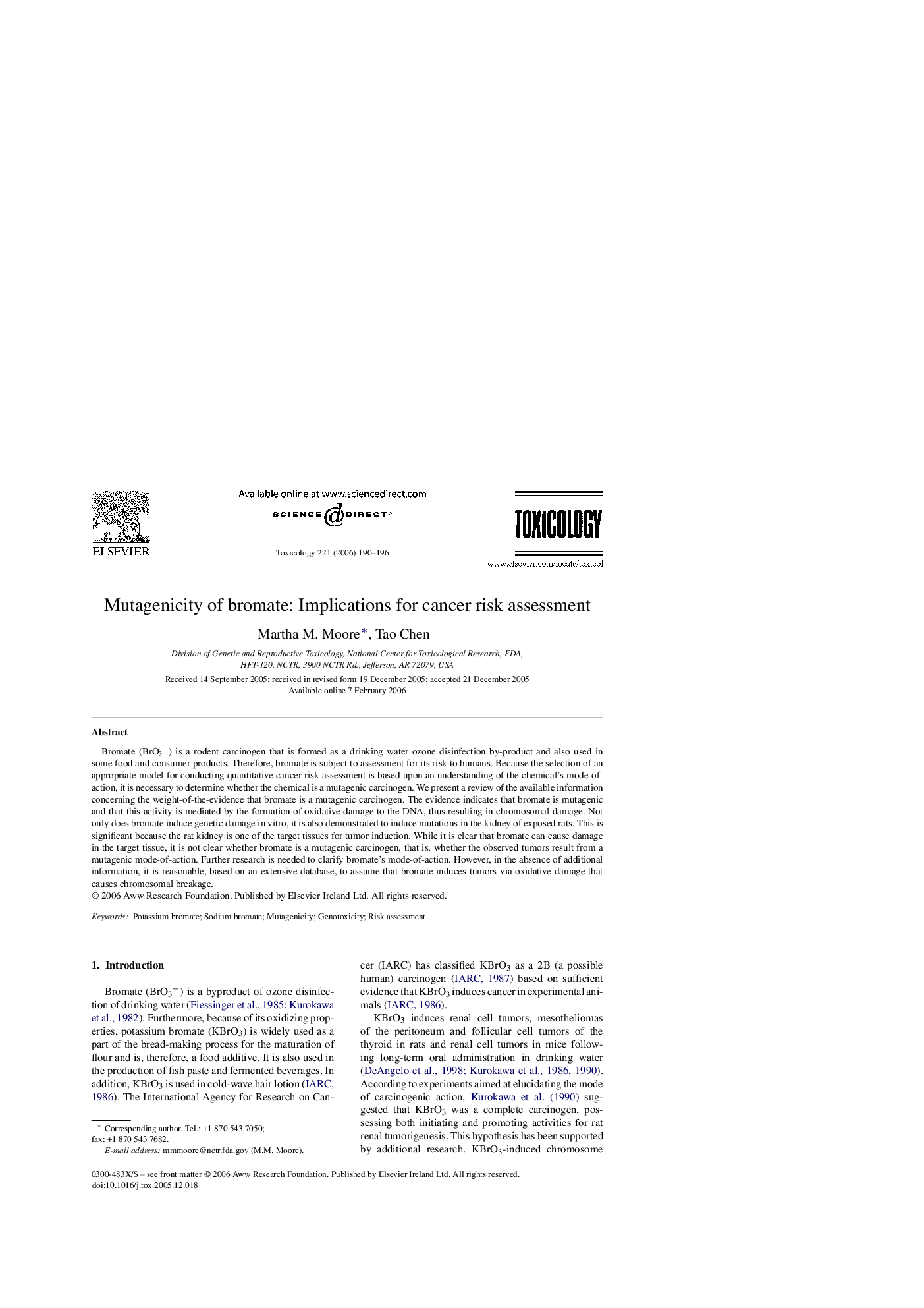| Article ID | Journal | Published Year | Pages | File Type |
|---|---|---|---|---|
| 2598174 | Toxicology | 2006 | 7 Pages |
Bromate (BrO3−) is a rodent carcinogen that is formed as a drinking water ozone disinfection by-product and also used in some food and consumer products. Therefore, bromate is subject to assessment for its risk to humans. Because the selection of an appropriate model for conducting quantitative cancer risk assessment is based upon an understanding of the chemical's mode-of-action, it is necessary to determine whether the chemical is a mutagenic carcinogen. We present a review of the available information concerning the weight-of-the-evidence that bromate is a mutagenic carcinogen. The evidence indicates that bromate is mutagenic and that this activity is mediated by the formation of oxidative damage to the DNA, thus resulting in chromosomal damage. Not only does bromate induce genetic damage in vitro, it is also demonstrated to induce mutations in the kidney of exposed rats. This is significant because the rat kidney is one of the target tissues for tumor induction. While it is clear that bromate can cause damage in the target tissue, it is not clear whether bromate is a mutagenic carcinogen, that is, whether the observed tumors result from a mutagenic mode-of-action. Further research is needed to clarify bromate's mode-of-action. However, in the absence of additional information, it is reasonable, based on an extensive database, to assume that bromate induces tumors via oxidative damage that causes chromosomal breakage.
